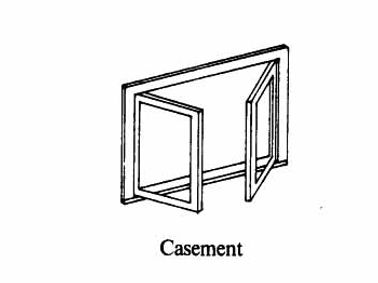Window Problem Guide
At MST Window Repairs, we’ve seen it all – from windows that just need a quick adjustment to those in serious states of disrepair. Some windows only require minor servicing to get them working smoothly again, while others may need full restoration – or even complete replacement.
MST are experts in diagnosing and fixing all kinds of traditional window problems. To help you understand what might be going wrong with yours, here’s a guide to some of the most common window issues we come across.

Double Hung Sash Windows
Double hung sash windows are a classic feature of many period homes. They consist of one or more movable panels—known as sashes—that slide vertically within the frame. Each sash holds panes of glass and is designed to move smoothly up and down, allowing for excellent ventilation and ease of use.
Built with longevity in mind, sash windows can last for generations. However, time, weather, and lack of maintenance can lead to wear and tear. Whether your windows are just a bit stiff or completely non-functional, they can almost always be repaired and brought back to life.
Common Problems with Sash Windows:
-
Painted Shut: Over the years, layers of paint can seal the sashes to the frame, preventing them from opening.
-
Snapped Sash Cords: These cords connect the sash to the counterweight system. When they snap, the window becomes difficult or impossible to open.
-
Lost or Disconnected Weights: If the internal weights become dislodged, the sash won’t stay open on its own.
-
Rotten or Damaged Timber: Exposure to moisture can cause decay in the sash or frame, compromising the structure and appearance.
-
Rattling in Windy Conditions: Loose sashes or poor sealing can cause windows to rattle and create noise in strong winds.
-
Draughts and Noise Ingress: Worn seals, gaps, or warped frames can let in cold air and outside noise, affecting comfort and energy efficiency.
Casement Windows
Casement windows are one of the most common and practical window styles found in homes, especially those built in the 20th century. They are hinged on either the left or right side of the frame and open outward—much like a door—using a handle or crank mechanism. This design allows for excellent ventilation and an unobstructed view, making them a popular choice.
However, like all window types, casement windows can develop problems over time, especially if they haven’t been regularly maintained.
Common Issues with Casement Windows:
-
Painted Shut:
Over the years, casement windows are often painted multiple times—sometimes with the window closed. This can cause the sash to bond to the frame, making the window impossible to open.
How to check: Look for gaps between the sash and the frame. If there are no visible gaps and the window doesn’t budge, it’s likely been painted shut. -
Broken, Worn, or Rusted Hinges:
The hinges, typically located on the side of the window, are crucial for smooth operation. Exposure to moisture and air can cause them to corrode, seize up, or break. This may result in the window sticking, sagging, or even becoming misaligned, preventing proper closure. -
Warped or Swollen Sashes:
Timber-framed casement windows can absorb moisture, causing the wood to swell or warp. This can make the window difficult to open or close and may damage the frame over time if forced. -
Stiff or Faulty Handles and Stays:
The opening mechanism—whether a traditional handle or a modern crank—can become stiff, worn, or detached. Friction stays or restrictor arms may also seize up, making the window hard to keep open or close securely. -
Air and Water Ingress:
Worn seals, perished gaskets, or a poor fit can allow draughts or rainwater to enter the property. This not only affects energy efficiency but can also lead to rot or interior damage if left unresolved.


Awning / Hopper Windows
An awning window is a type of window that is hinged at the top and opens outward from the bottom, typically using a handle, crank, or lever mechanism. They are often found in bathrooms, kitchens, and basements, and are particularly popular in modern and mid-century-style homes. Awning windows can be installed on their own or above larger stationary windows to provide ventilation while keeping out rain.
Because of their design, awning windows offer good airflow, weather protection, and privacy—but like all windows, they can develop faults over time and may require professional repair
-
Painted Shut Older timber awning windows are sometimes painted while closed, causing the sash to stick to the frame. This can make them impossible to open without risking damage to the timber or glass.
-
Seized or Broken Hinges - Awning windows typically use friction hinges to hold them open at various angles. These can seize up from rust or wear, preventing the window from opening smoothly—or at all.
-
Failed Seals or Draughts. Over time, the rubber seals or gaskets can degrade, allowing cold air, moisture, and noise to leak in. This reduces energy efficiency and comfort, especially in winter.
-
Rotten Frames or Sashes - Timber awning windows are particularly vulnerable to water damage, especially at the bottom edge of the sash. This can lead to rot, swelling, or warping, affecting both function and appearance.
-
Faulty Crank or Handle Mechanisms - In modern versions, the crank system used to open and close the window can break or strip internally, making the window difficult to operate or jammed open
-
Misalignment or Poor Fit. Over time, frames can shift slightly due to settling, expansion, or wear, causing the window to no longer seal properly or to catch when opening and closing.
